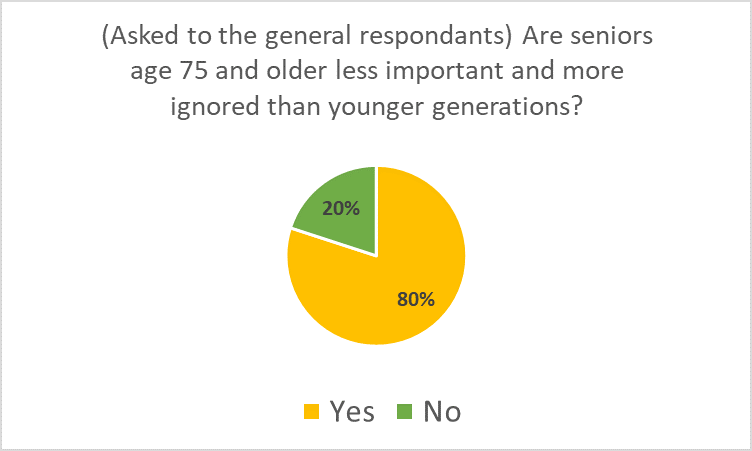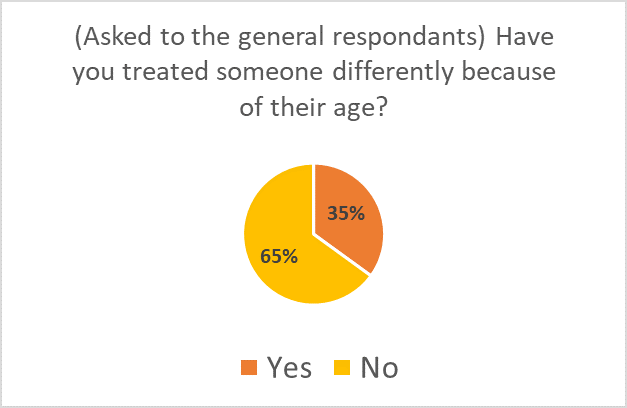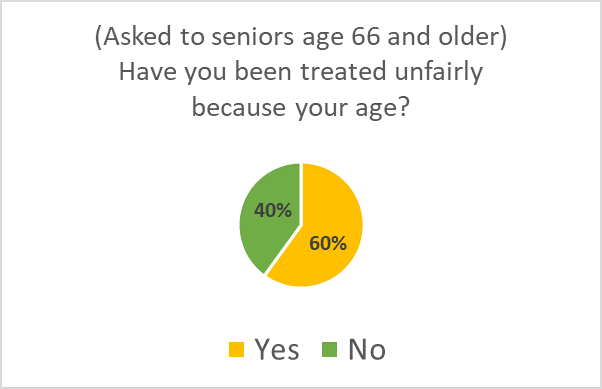Ageism Towards Womxn Around The World: Canada
- envisâgeteam

- Jul 16, 2020
- 4 min read
Updated: Aug 4, 2020
Ageism is widespread in Canada. You don't believe us? Take a look at this...

To get a firm grasp on this reality, let’s take a look at the results of a survey lead by CTVnews with 1,500 Canadians:
According to the survey, the three primary forms of discrimination faced by older Canadians:
Being ignored or treated as though they are invisible (41%)
Being treated like they have nothing to contribute (38%)
Assuming that seniors are incompetent (27%)
This reality is opening the door to discussions surrounding elder abuse, stereotypes towards older people (and most specifically older womxn) and discrimination of older people trying to access critical goods and services (e.g. in access to healthcare services). Although ALL these topics are essential to address (which we will do in coming articles), this post will focus on discrimination towards womxn in the workplace and legislation protecting older people in the workplace in Canada.
Ageism Towards Womxn in the Workplace
According to the 2018 labour force report, Canadians aged 55+ accounted for 37.9% of the working population. Adding on, according to the 2016 Statistics Canada census, the 65+ population is also outnumbering children in the country. Although the average retirement age in the country stays at a steady 63, there is an increasing part of the working population that is aged 55+, making discussions surrounding ageism in the workplace surging in Canada. Finally, pieces of research in North America have highlighted that womxn 50 years of age and over are a demographic facing some of the worst discrimination in the workplace.
"Women over 50 are both unfairly forced out of their positions and have unjustified difficulty reentering the workforce, which then negatively impacts components of their lives such as economic stability, self-esteem, social connectedness and emotional wellbeing" (Beaton, 2018)
Cathie Brow, senior vice president of human resources and communications at Rivera, a leading organization in the “senior” living sector, deplores that "ageism is the most tolerated form of social prejudice in the country."
“We recognize what it means to be sexist when we don’t intend to be. We recognize what it means to be racist when we don’t intend to be. Similarly, I think we need to recognize what it means to be ageist. The existence of ageism is real.” - Cathie Brow

Age Discrimination Law
All ten provinces and three territories of Canada have laws designed to ensure the equality of its peoples. The Federal government supports this legislation with additional laws targeting industries considered to fall under federal undertakings (in Canada, powers are divided between the federal government and the provincial ones). The main document prohibiting age discrimination in the country is the equality clause of the Charter of Rights and Freedoms:
"Every individual is equal before and under the law and has the right to the equal protection and equal benefit of the law without discrimination and, in particular, without discrimination based on race, national or ethnic origin, colour, religion, sex, age or mental or physical disability (emphasis added)."
The enforcement mechanisms and remedies will differ based on the jurisdiction (provinces and territories). Individuals successfully alleging discrimination will mostly be awarded by the tribunal monetary compensation or non-monetary remedies (reinstatement in the lost employment, a promotion, the removal of the harasser from the work environment, etc.). Other than serving justice, these complaints can also lead to obligations from employers to adjust their behaviours, so such events do not get repeated:
Change hiring practices;
Develop non-discriminatory policies and procedures;
Develop internal human rights complaint procedures;
Implement pro-active measures;
Implement education and training programs;
Publish an extract of the decision in the corporate newsletter; and/or
Post the Code in the workplace.
Contrary to what was highlighted in our previous Ageism Towards Womxn Around The World post discussing China, claims of age discrimination in employment are somewhat more common in Canada. The Ontario Human Rights Tribunal (HRTO) reported that 77% of its received claims are related to discrimination in employment, and around 15% of these claims are related to age discrimination. (To learn more).

Although ageism is deeply present in the Canadian workplace, there are a plethora of actions that can be taken in order to reduce this phenomenon (Five ways you can combat ageism in the workplace).
Is ageism as present in the workplace of your country? Do you have any suggestions on how to fight ageism in the workplace? Contact us and share your thoughts in an article!
Article based on
Anti-Ageism in the Workplace. City of Toronto. Retrieved 15 July 2020, from https://www.toronto.ca/community-people/get-involved/community/toronto-for-all/anti-ageism-in-the-workplace/.
'Ageism' widespread in Canada, survey finds. CTVNews. (2012). Retrieved 15 July 2020, from https://www.ctvnews.ca/canada/ageism-widespread-in-canada-survey-finds-1.1021641.
Canada — age discrimination. agediscrimination.info. (2018). Retrieved 15 July 2020, from http://www.agediscrimination.info/international-age-discrimination/canada.
Jones, S. (2018). Ageism is alive and thriving in our workforce, limiting older employees, say experts. Cpacanada.ca. Retrieved 15 July 2020, from https://www.cpacanada.ca/en/news/canada/2018-08-09-ageism-is-alive-and-thriving-in-our-workforce-limiting-older-employees-say-experts.
Ranosa, R. (2019). How to fight age discrimination in the workplace. Hcamag.com. Retrieved 15 July 2020, from https://www.hcamag.com/ca/news/general/how-to-fight-age-discrimination-in-the-workplace/176570.
Samuel Centre for Social Connectedness. (2018). Gendered Ageism in the Canadian Workforce The economic, social and emotional effects of isolating older women from the workplace.











Comments